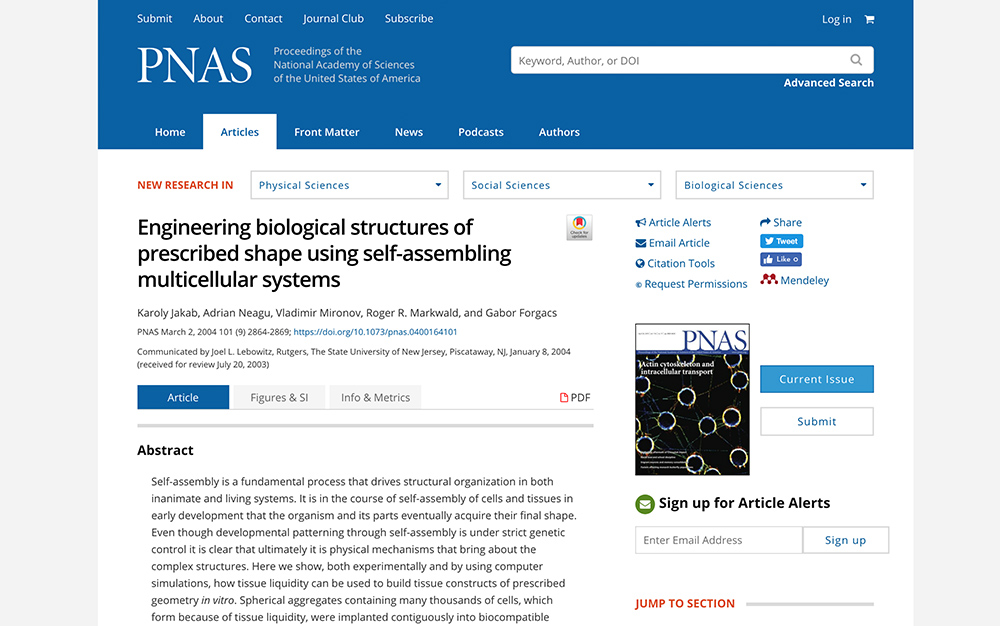Engineering biological structures of prescribed shape using self-assembling multicellular systems
Publication Summary:
Self-assembly is a fundamental process that drives structural organization in both inanimate and living systems. It is in the course of self-assembly of cells and tissues in early development that the organism and its parts eventually acquire their final shape. Even though developmental patterning through self-assembly is under strict genetic control it is clear that ultimately it is physical mechanisms that bring about the complex structures. Here we show, both experimentally and by using computer simulations, how tissue liquidity can be used to build tissue constructs of prescribed geometry in vitro. Spherical aggregates containing many thousands of cells, which form because of tissue liquidity, were implanted contiguously into biocompatible hydrogels in circular geometry. Depending on the properties of the gel, upon incubation, the aggregates either fused into a toroidal 3D structure or their constituent cells dispersed into the surrounding matrix. The model simulations, which reproduced the experimentally observed shapes, indicate that the control parameter of structure evolution is the aggregate–gel interfacial tension. The model-based analysis also revealed that the observed toroidal structure represents a metastable state of the cellular system, whose lifetime depends on the magnitude of cell–cell and cell–matrix interactions. Thus, these constructs can be made long-lived. We suggest that spherical aggregates composed of organ-specific cells may be used as “bio-ink” in the evolving technology of organ printing.
View Publication
